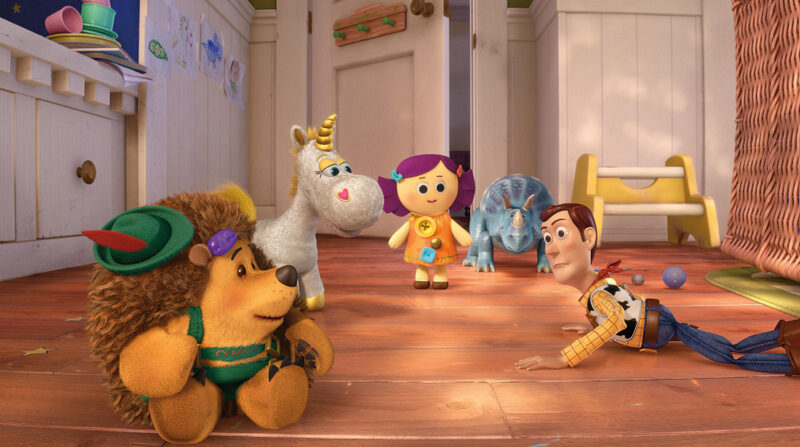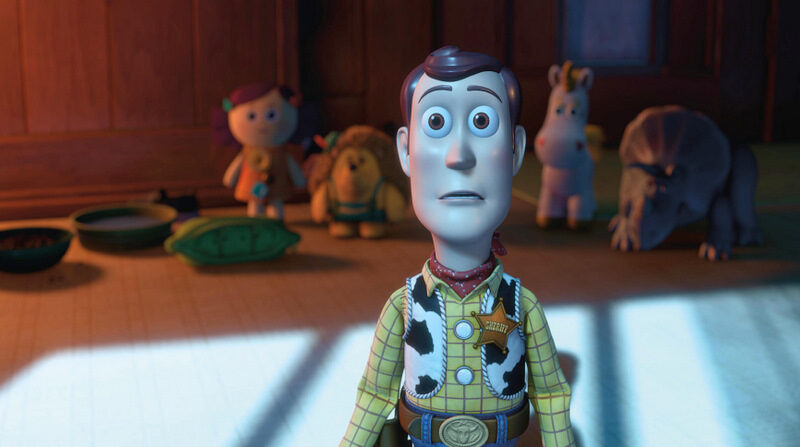Exclusive Interview with Toy Story 3 Director Lee Unkrich | Clothes on Film
As the exquisite Toy Story 3 finally arrives in the UK, Clothes on Film caught up with its director Lee Unkrich for an exclusive interview. We discussed the role of costume in animation, Ken’s camptastic wardrobe and how Stanley Kubrick shaped Lee’s career as a filmmaker.
Costume and animation may not seem like typical bedfellows, simply because the medium is not tangible as such. It does not exist in the physical world only on screen, yet animated films; particularly those by Disney/Pixar, particularly Toy Story, often employ costume as a character/storytelling device. Woody stripped of his identity as a cowboy by losing his hat, or Al of Al’s Toy Barn’s subtle 50’s inspired shirts for example (both Toy Story 2) demonstrate how costume can function in animation on a conscious and subtextual level.
Lee Unkrich expands this idea with Toy Story 3. Evidently in animation, perhaps more so than live action, nothing on screen happens by chance. Everything has meaning. Even a hedgehog wearing Lederhosen.
Chris, Clothes on Film: Who decides what the Toy Story characters (obviously those with clothes) will wear? Do you have a costume designer?
Lee Unkrich: My production designer Bob Pauley is in charge of the entire team of different designers. Some of the team specifically concentrate on character design, and so if a character happens to be wearing clothes…that is part of the package. There isn’t a separate person designing the clothes; the clothes will come along with the design of the character.
For instance, Mr Pricklepants…we always knew we wanted him to be a hedgehog wearing Lederhosen. We didn’t design the hedgehog toy in a void. We always knew he was going to have Lederhosen on from the get-go with that particular costume.
In terms of the colours of the outfits a lot of that is driven by my art director Daisuke “Dice” Tsutsumi. He is responsible for designing the colours of the movie, whether it’s the colour of the lighting, wallpaper, bed-clothes or costume.
In this film we came up with the concept of blue connoting safety and home. At the beginning of the film, Andy…his bedroom is blue, the sky is blue, his t-shirt is blue. He is in blue jeans, he’s got a blue car – these are not accidents. These are conscious choices. Everything in the movie is there for a reason. We are making a commitment to say that blue will connote safety and trying to avoid that in situations where we don’t want the audience to feel safe.
COF: Ken is clearly a clothes horse. How did you go about researching his costumes?
Lee: We really wanted to have Ken in the film. We thought it would be really funny; just the idea of Ken in the film… it was funny to us for some reason. I started to do some research to figure out what kind of Ken we wanted to have, because he’s had lots of different looks over the years. Clothing aside, he sometimes has real hair, sometimes plastic moulded hair; even fuzzy hair. I looked at every Ken that’s ever been made.
One Ken in particular, made in 1983, called ‘Animal-Loving Ken’- he had moulded plastic hair and a twinkle in his eye. He just looked so smug and tan, and he came in this crazy blue safari outfit, blue leopard-print shirt with little short shorts, gold belt and blue loafers, and the whole package to me was really, really funny. And that is how we used that Ken, and we had him show up in that specific outfit when he shows up on the elevator.
It was looking at all the different Kens and all the different fashions over the years that gave me the idea to have Ken show up in a different outfit in every scene. Every single scene he shows up in a different outfit, and I imagined this whole weird back-story – before every scene he thinks to himself “what is the right outfit for what I am going to do?” He will match the outfit to the occasion. So when he meets the toys at the beginning of the movie, we played that like a bunch of characters turning up at Club Med, so he wears this fun, tropical outfit. Every other costume in the film goes along with his mind-set. What’s funny is that Ken’s clothing is designed to appeal to girls. He is a girls’ toy.
COF: He is kind of camp.
Lee: Yeah, totally. Every single outfit has some sparkle in it, some shininess, or some glitter, because it’s all about appealing to girls. They were trying to make clothing that would appeal…sell to young girls. What’s funny is that Ken doesn’t think this is strange at all, because this is all he knows. So he embraces them and he thinks he looks fabulous in them.
COF: When initial images for the film came online, there appeared some suggestion that Ken was going to be gay, or perhaps a closet homosexual, but clearly this isn’t the case. He’s obviously camp, yet very into Barbie.
Lee: Looking at Ken in a void, looking at Ken in that outfit, it’s easy to say “wow, he’s flaming!” But once you see the film, you get the joke…that he’s just wearing what he’s got, working with what he has. He’s very masculine – he’s very much in love with Barbie. He’s this guy who walks around starring in a movie that’s playing only in his head.
COF: Do you use costume to move character and plot forward?
Lee: Sure. The interesting thing about Woody is that he’s a sewn-together doll. The only thing he can lose is his hat because everything else is actually part of his body. But yeah, his hat is his identity because he’s a cowboy. We found some clever ways to make use of that.
One of the new supporting characters is Dolly, played by Bonnie Hunt. One of the interesting things with her, her clothing, her dress, is that I wanted it to look homemade. I wanted it to feel like the little girl who actually owns her, Bonnie, had made the dress, so the edges are cut in a very ragged way like a child has cut them. It has three randomly-placed buttons on the front. It was all chosen with something very specific in mind. I wanted Bonnie to be seen as the kind of kid who did a lot with very little. We didn’t want to give her a lot of toys. We filled her room with crafts…things that she had created. We wanted to create this environment of a girl who was very, very imaginative.
COF: Creative…
Lee: Yes, creative. And Dolly’s dress was a way of creating that idea.
COF: In-between the films have you altered any of the costumes? Obviously you can’t go off-model, but have you made any changes to the clothing design?
Lee: If you look at Woody from Toy Story 1, side-by-side with Woody from Toy Story 3, you can see we have made quite a few little changes. Woody from Toy Story 1 looks a bit more CG, more sharp-edged in places. And in Toy Story 3 we completely rebuilt Woody. We made his clothing a lot more realistic. How it would stitch together and the way the stuffing inside kind of bunched the fabric out. Folds appeared when you twisted him in certain ways. He is now a lot more tangible and believable than he was in the first film. Again, I don’t know if anyone will notice it. It’s just kind of a subtle thing to take in while you are watching the film.
COF: Do you have a favourite costume in movies?
Lee: My favourite movie is The Shining. It’s the movie that got me interested in making movies in the first place. And I’m so obsessed with the film, I’ve actually tracked down a few costumes from the movie and I’ve bought them for myself. I own them now.
COF: Which ones?
Lee: I own two from the movie. One from the character Scatman Crothers plays. He gets killed…hit with an axe at the end of the movie, and I own the big winter coat that he’s wearing. I also have a sweater I recently bought that Danny, the little boy, is wearing in the film. He has a homemade style sweater with an Apollo rocket on the front. I own that sweater.
Lee Unkrich was interviewed by Chris Laverty on Friday 16th July, 2010 at The Soho Hotel, London. Toy Story 3 is on general release right now.
© 2010 – 2011, Chris Laverty.
Related Posts:






